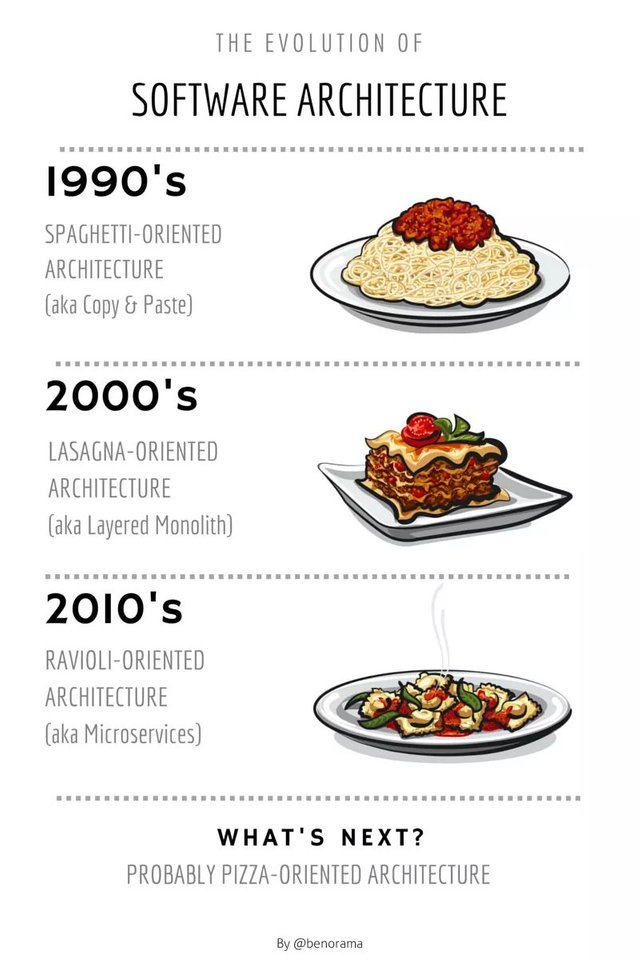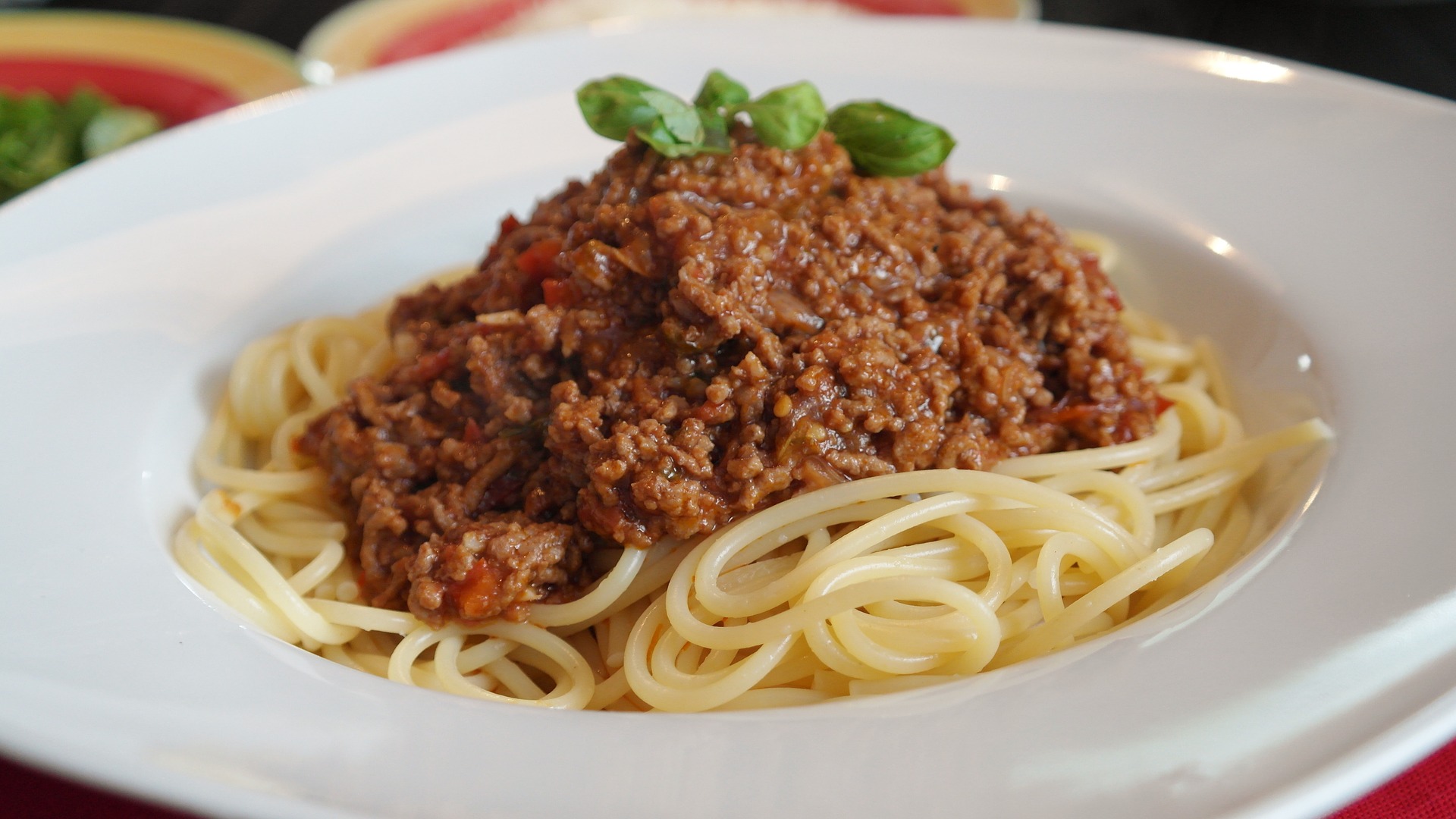A couple weeks ago, I saw the following image in my Twitter feed:

I, for one, am old enough to have lived through all 3 of these paradigms for software architecture. The team on which I am a part has been strategically tasked largely with taking a spaghetti codebase and moving to ravioli. So the analogy fits (though in retweeting this pic, I did claim to be a bit more of a tortellini fan myself.)
That said, what is not illustrated in this infographic is the complexity associated with each form. Arguably, spaghetti is easier, mostly because you can avoid caring about things.
Attention to architecture creates a burden that developers must appreciate in order to deliver.
Case in point: If I don’t care about architecture, I can create a single web page that connects directly to my database from the server-side code-behind. This was not unusual in the spaghetti days. Every page opening its own database connection. Defining its own objects (that is, unless you just use the DataRow.) In the spaghetti days, there was no Pragmatic principle of Don’t Repeat Yourself. We were proud of ourselves for making it work, and moved on to the next strand.
Today, our system has the following flow to query a database:
Client UI Page -> Controller -> API Wrapper -> API -> Provider -> DataStore -> ORM -> Database
Now we have a Visual Studio solution containing 10 or 12 assembly projects to accomplish the same thing we used to do in a single page. We transform a database record to an entity, then to a Data Transfer Object, then to a Query result, then to a json object, then to a result object, then to a model.
Because now we care. We’ve learned to care over the last 3 decades because there is inherent value in the architectures when it comes to code reuse, reliability, and testability. But now, ravioli making takes time.

In my own journey towards ravioli, I’m learning to appreciate the steps. The beauty of component parts, each tasked with a single purpose, able to live in their own cozy pocket of dough. But the cost of that coziness is time, fore-though and planning. It’s an investment, and reminds us that software, like artisan pasta making, is a craft.

Leave a Reply